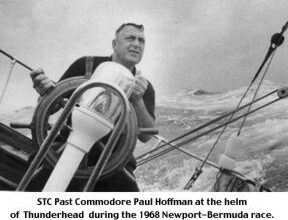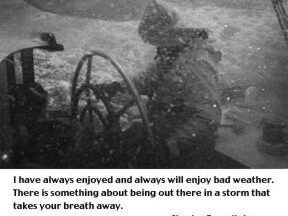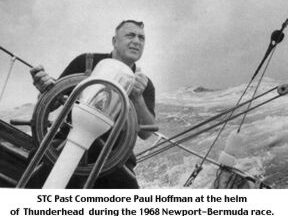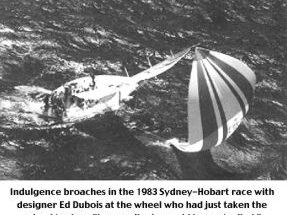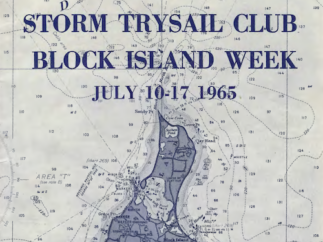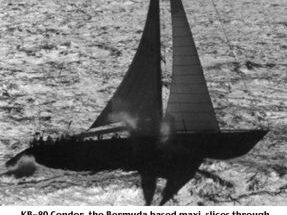The first generations of American ocean racers believed the best test of a boat was whether she could blast her way safely across the Gulf Stream bound for Bermuda and then house her crew once she got there. The ultimate challenge under that standard was a two-or three-week Trans-Atlantic race from New England or Bermuda across the North Atlantic to England, Europe or Scandinavia.
Many of the crews in the early Bermuda races were dinghy sailors, some of the best young sailors in the world. Those men could take rough and tumble conditions. In that extremely rough 1936 Bermuda Race, one of several sailors who was injured was 53-year-old John Parkinson. He flew stark naked out of a windward bunk, across the main cabin and smashed face-first into the leeward side. “He unhooked his lower lip from his lower teeth,” a witness remembered, “spat out a bloody handful of his smashed upper dentures, paid no attention to his son’s down-the-hatch exclamation, ‘Jesus, the old man’s had a tumble!’ put on his gear (including a knitted, blue worsted cap), went on deck (it was 4 am), and took his trick at the helm. He was kept alive for the next few days on a diet of soup and raw eggs, and recovered completely in Hamilton with the aid of other liquid refreshment.”
Sailboats had many limitations in those early days, before Dacron sails, nylon rope and aluminum masts came into use in the late 1950s. Everything about those boats was natural and none-too-reliable unless carefully nursed by a watchful crew. “Racing sailboats were very unsophisticated back then,” remembers Dick Goennel, a Storm Trysail founder while a teenager who would later crew aboard the 1964 America’s Cup winner Constellation at the age of 40. “For example, we had this wonderful Italian rope for sheets called ‘balloon rope.’ But it would shrink when it got wet. So if it rained you’d have to ease the halyards so the cleats wouldn’t pull off the mast. And if you didn’t shorten down in time, you’d lose sails. You’d have to make a sail change quickly or it would be blown out or a sheet would let go. When that happened it was usually it was all hands on deck. Of course, you had to dry a cotton sail or a stitch might rip, and you couldn’t always do that. Still, the crews pushed those boats as hard as they could.”
While the founding members of the club enjoy telling stories about the technological primitivism of the creaky, hairy boat of the early days of ocean racing, they also take pleasure describing the human factor. First of all, like any community on a frontier, it was cheerfully intimate. “In the beginning, we all knew each other,” recalls Dick Goennel. “I remember going on races and every time we passed another boat I’d recognize somebody on board.” Legendary STC member Sean O’Connell, who could often be found playing his bag pipes in the cockpit before the start of a race, says that while thumbing through the crew rosters before the 1950 Bermuda Race (his first of 14), he realized that he knew just about every sailor on the 54 entrants.
Past Commodore Jakob Isbrandtsen, a mover and shaker in the Club’s formative years, remembers the camaraderie of the at-large community. Trans-Atlantic and other long-distance races were to him an extension of shore side relationships. “I’d much rather cook up something on board and have a good show,” said Isbrandtsen. “Of course, you can only do that with people you know. We were all good friends who enjoyed working and living together on the boat. Everybody lent a hand. We paid a lot of attention to good living and had one of the best galleys afloat.”

